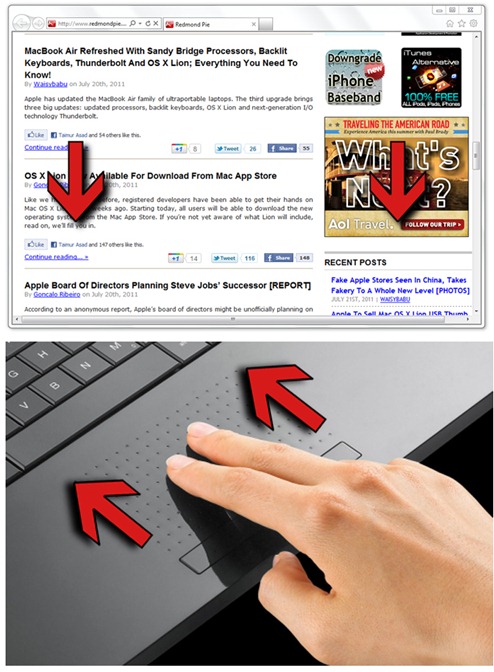If you’ve tried Mac OS X Lion, you’re probably familiar with its touch-friendly iOS-style scrolling. Just a few weeks ago, A simple script can do the trick, read on.

By default, when moving the scroll wheel up, Windows will automatically move any page up, and vice-versa. It’s been this way for decades, until OS X Lion (inspired by iOS) brought reverse scrolling to the table, which is more sensitive to the touch. If you’re looking to bring this form of scrolling to Windows, just follow the quick steps below.
You’ll need:
- A Windows computer.
- AutoHotKey, the software needed to run the script we mentioned above. You can download it from here (direct link).
- The scroll-reversing script, which you can get from here.
- 5 minutes to spare.
There are several limitation to this tweak, which is not surprising, since it likely took its developers no more than 5 minutes to write. Scrolling isn’t smooth and fluid like it is on Lion or Mac OS X, and doesn’t have the elasticity effect found in those systems. In my opinion, reverse scrolling might not make that much sense using traditional computing interfaces like the mouse, just given the way the scroll wheel works. Yet, it does prove a point and while some users might just prefer traditional scrolling, it’s nice that there’s the choice.
OS X Lion, if you’re not already aware, is Apple’s new Mac operating system. The new operating system, which became available to consumers today, includes several new usability paradigms that were borrowed from iOS, the operating system that runs on iPhones, iPod touches and iPads, including the new reverse scrolling which we just showcased. Unlike previous versions of Mac OS X, Lion is available online only as a 4 GB download from the Mac App Store.




0 comments:
Post a Comment